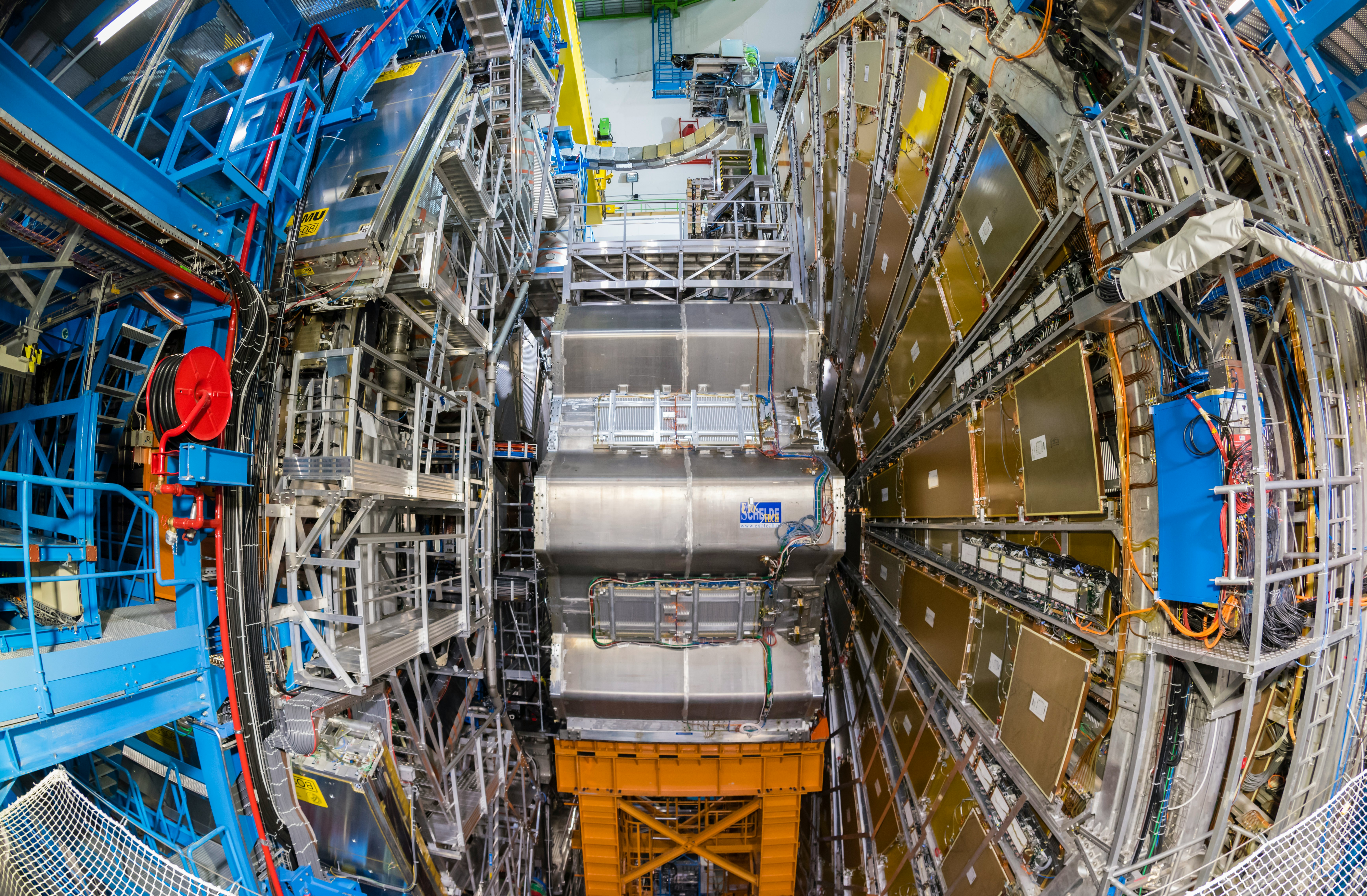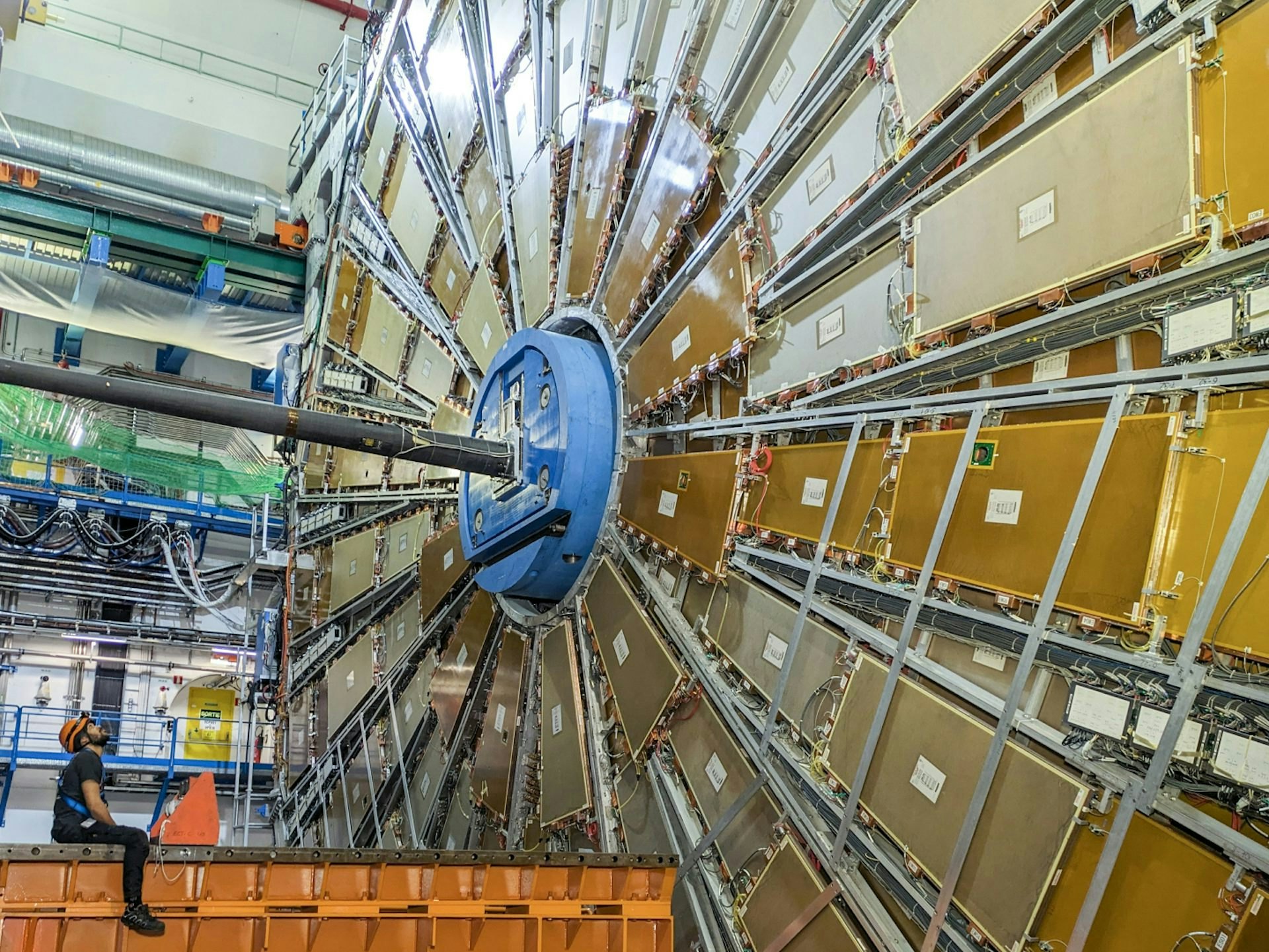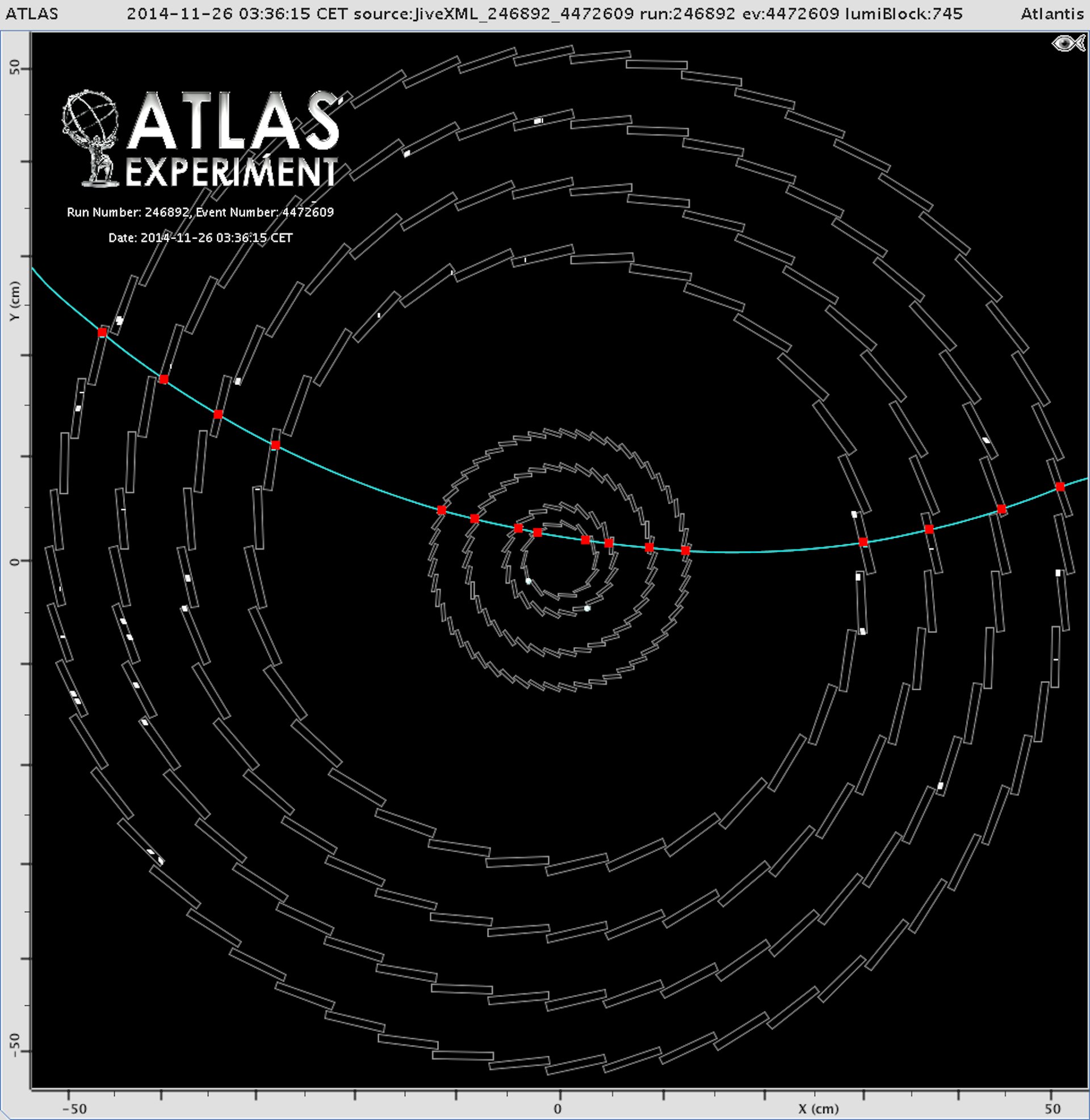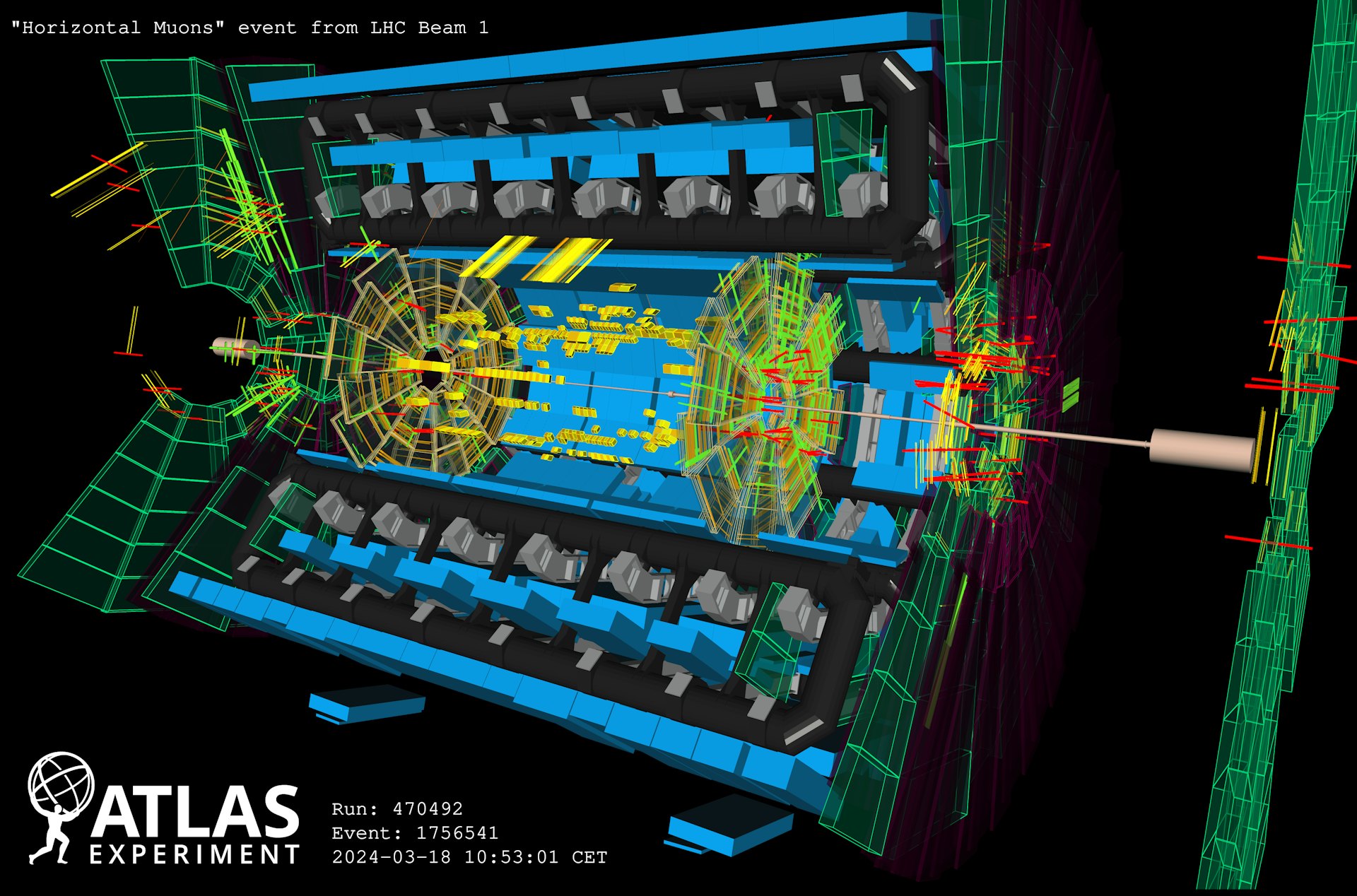
When you push “start” on your microwave or computer, the device flips right on — but major physics experiments like the Large Hadron Collider at the European Organization for Nuclear Research, known as CERN, don’t work that way. Instead, engineers and physicists need to take a few weeks every year to carefully reset the collider and all the experiments on it.
I’m a CERN physicist who worked with my colleagues in the past few months on the reset process of the largest of the experiments, ATLAS. To collect accurate data about particle collisions and study some of the universe’s most compelling mysteries, the collaboration needs to make sure the equipment is calibrated properly.
At CERN, the Large Hadron Collider, or LHC, smashes protons at the highest energy ever reached to create new particles, which physicists then catch and study with several experiments.

The LHC explores the hidden world of subatomic particles, the fundamental building blocks of everything around us. Studying these particles helps scientists like me better understand how the universe works and evolves over time.
Hibernating and waking up the LHC
Each winter, the collider and its experiments hibernate. My and other teams at CERN push them to take this winter nap for a few reasons.
The machines we use here are complex. We need some time to replace pieces or install new components. And, given that all those machines use a lot of power, we avoid running them in winter, when electricity costs more, and when nearby Geneva needs to keep its residents warm.
But when spring comes, all the teams prepare the LHC and the experiments for a new season of data gathering.
While engineers and technicians work to reset the accelerator and prepare it to smash protons, my colleagues and I, the experimental physicists, prepare the experiments to promptly and correctly collect data from all the particles produced by the collider.
Testing with cosmic rays
The experiment teams start the first phase of waking up the LHC from hibernation while the accelerator is still asleep. We need to start testing the particle detectors even while the collider that creates the particles isn’t working.
In this first phase, we use what’s always available, provided by nature itself – cosmic rays. These are subatomic particles created when energetic particles from space hit atoms high in the atmosphere.

A cosmic ray enters the ATLAS detector in the LHC on the left. Each time it strikes a sensor, the ray loses some of its energy, which the detector converts into a signal and records. By drawing a line through all the sensors the cosmic particle met, physicists can reconstruct its arriving direction, its path through the experiment, and its energy. Cosmic rays help us train the sensors and verify that everything works as expected.
However, cosmic rays are random and sparse, so we can’t rely on them for all our tests. For subsequent tests, we use a denser and more predictable source – subatomic splashes.
Subatomic splashes to synchronize them all
The LHC has about 17 miles (27 kilometers) of pipes that protons fly through. The pipe has magnets around it that steer the protons it accelerates. Any particles that stray off track get stopped by a small piece of metal called a collimator. This collimator gets pushed down into the center of the accelerator pipe, where the protons smash into it and interact with its atoms.
This collision creates a huge quantity of particles, which then move in unison along the accelerator pipe as a big splash – or, as we call them, a “beam splash.” Around mid-March, the accelerator team creates these for the ATLAS experiment.
The big wave of particles hits the experiment all at once, and this wave allows us to verify whether all the detectors in the experiment react correctly and in sync. It also tests whether they can record and store data at the required speed.
Horizontal muons to calibrate them
Most of the particle detectors in the experiments are now ready to get new data. However, some types of detectors in the LHC require additional tests.
One is the ATLAS experiment’s Tile calorimeter, a detector that measures the energy of particles such as neutrons and protons. It’s made of rows of tile-shaped sensors, and test particles have to pass through these tiles horizontally to accurately calibrate the detector.
The massive sprays of particles created by beam splashes are not good for calibrating the Tile calorimeter. The particles aren’t coming at the right angle, and there are too many all at once.
To test the Tile calorimeter, we are only interested in one particular type of particles – muons. Muons are similar to electrons but heavier, and they interact differently with the surrounding world. They can pass through multiple rows of sensors without losing much energy or being stopped – which makes them useful to test particle detectors.
So, toward the end of March, we set up another test, using the collimators once again.
This time, however, the LHC engineers push the collimator only slightly into the protons’ path, so the particles just barely scrape the collimator. The protons’ gentle friction against the collimator’s metallic surface creates particles that move parallel to the accelerator pipe and hit the ATLAS experiment horizontally.
We use dedicated sensors to reveal muons created by the collision with the collimator and flag them. Then we track them as they move through the Tile calorimeter.
These horizontal muons pass through all the calorimeter’s tiles in a row so we can make sure it’s collecting data accurately.

Ready for new physics
Once the LHC is all calibrated and ready to go, it accelerates protons at their maximum energy – and then pushes them to crash into each other.
After around 10 weeks of tests, a new season of data gathering begins, bringing dreams of new discoveries.
This article was originally published on The Conversation by Riccardo Maria Bianchi at the University of Pittsburgh. Read the original article here.







